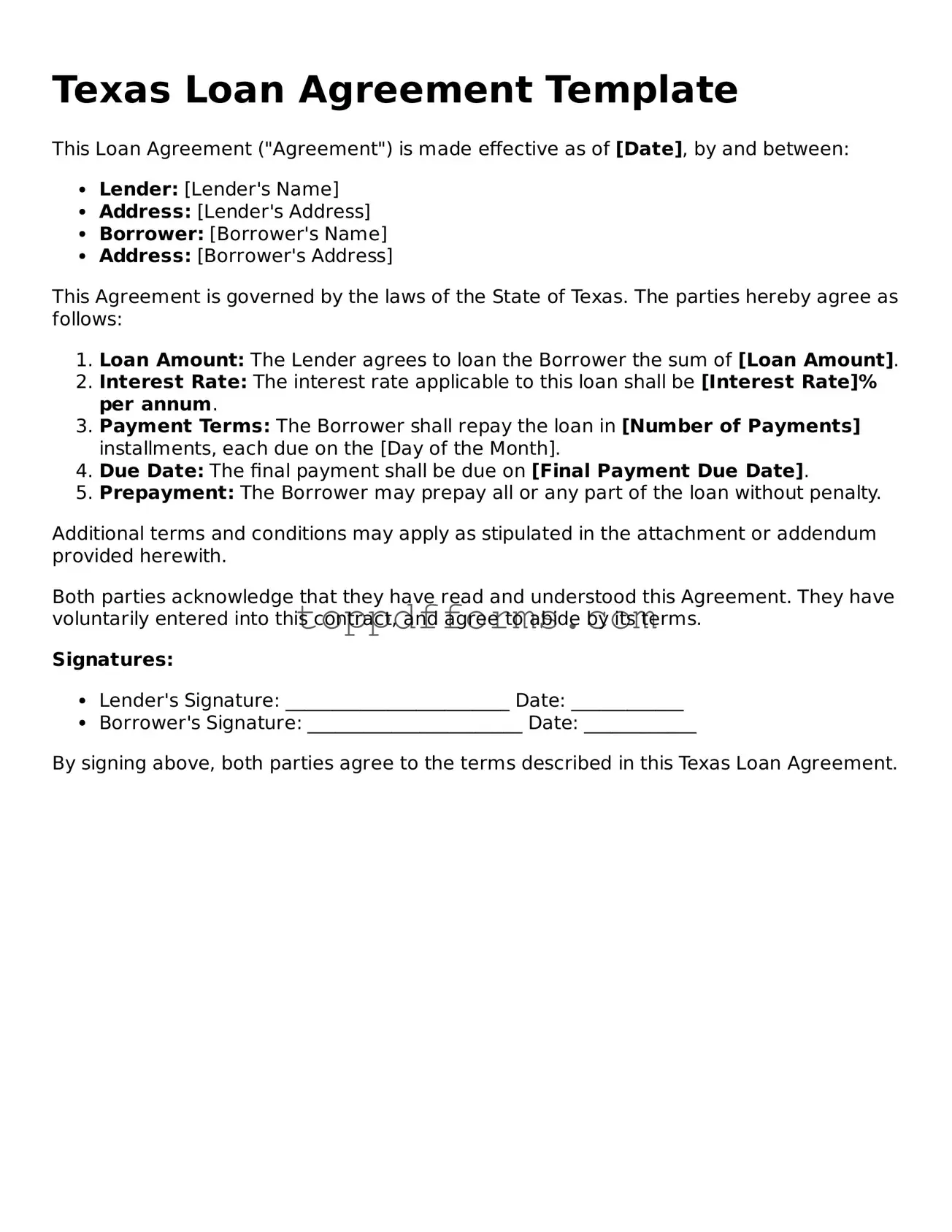Filling out the Texas Loan Agreement form can be a straightforward process, but many individuals make common mistakes that can lead to complications later on. One frequent error is failing to provide accurate personal information. Borrowers often overlook the importance of entering their full legal name, current address, and contact information correctly. Even a small typo can create issues when the lender tries to reach out or when the agreement needs to be enforced.
Another mistake involves not specifying the loan amount clearly. It is crucial to write the exact dollar amount being borrowed in both numerical and written form. Omitting this detail or providing an incorrect figure can lead to misunderstandings and disputes down the line. Clarity in this section is essential to ensure all parties are on the same page.
Additionally, many people forget to outline the terms of repayment. The agreement should detail how and when payments will be made. This includes the frequency of payments, whether they will be monthly or bi-weekly, and the due dates. Not including this information can create confusion and lead to missed payments, which may incur penalties.
Some borrowers neglect to read the fine print. Important clauses regarding interest rates, late fees, and default consequences are often buried within the text. Understanding these terms is vital, as they can significantly affect the total cost of the loan. Ignoring them can lead to unexpected financial burdens.
Another common oversight is not having the agreement signed by all necessary parties. A loan agreement is not legally binding unless it is signed by both the lender and the borrower. Failing to obtain all required signatures can render the document invalid, leaving the parties without legal recourse if disputes arise.
Moreover, people sometimes forget to keep a copy of the completed form. It is essential to retain a signed copy for personal records. This document serves as proof of the loan terms and can be crucial if any disagreements occur in the future. Without it, borrowers may find themselves at a disadvantage.
Lastly, individuals often underestimate the importance of consulting with a financial advisor or attorney before finalizing the agreement. Professional guidance can help clarify any confusing terms and ensure that the agreement meets all legal requirements. Skipping this step can lead to costly mistakes that might have been avoided with proper advice.
